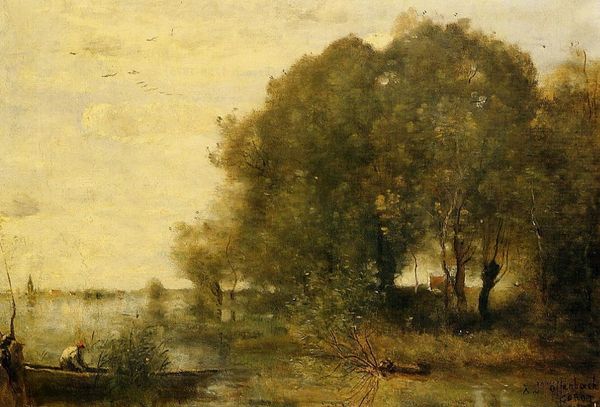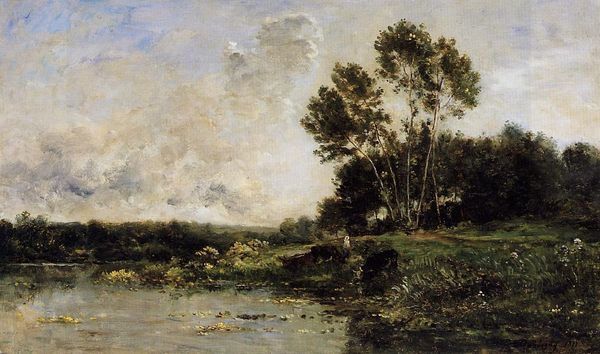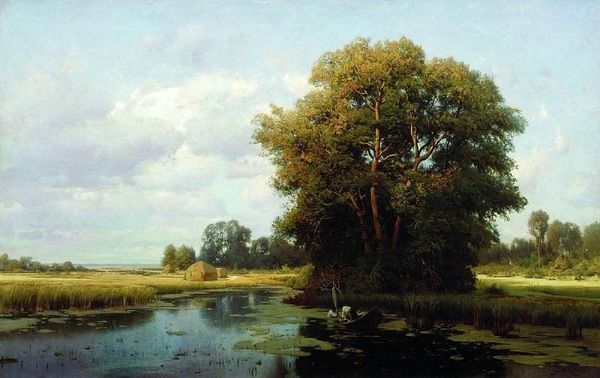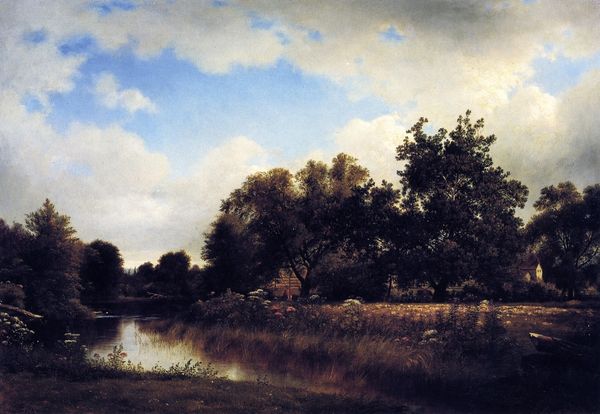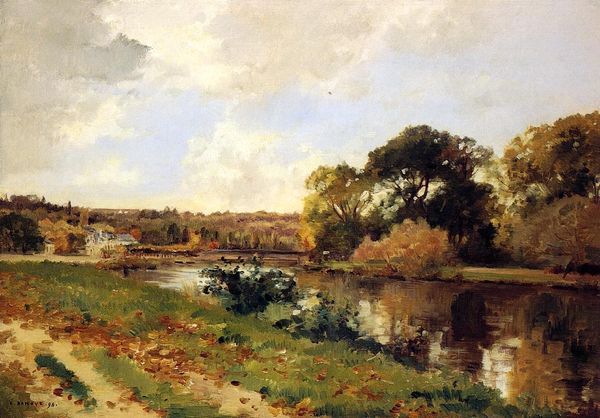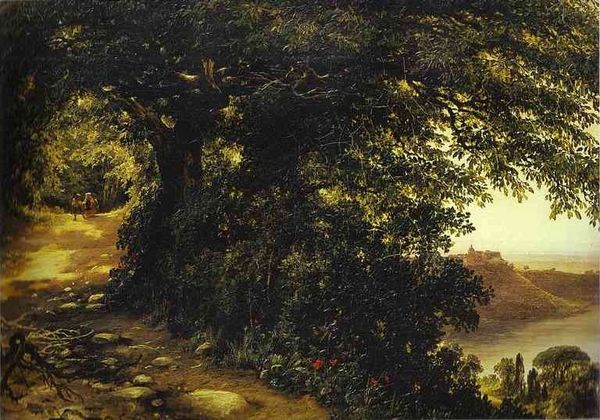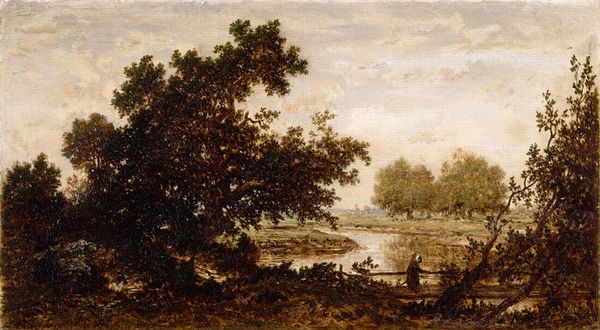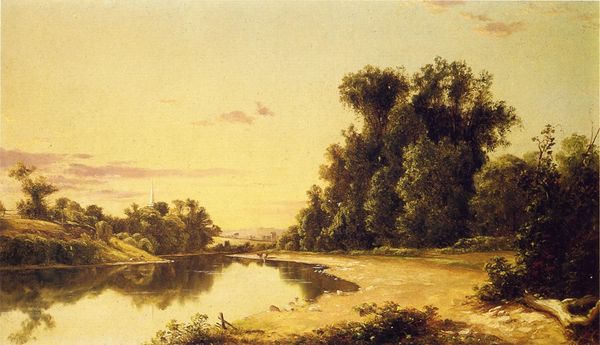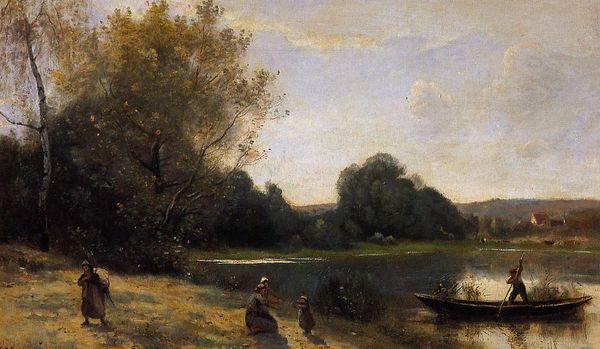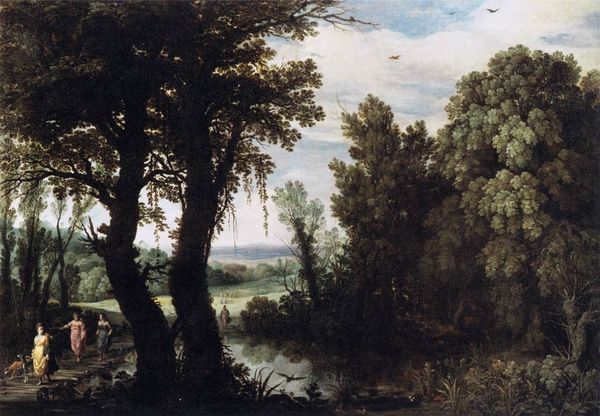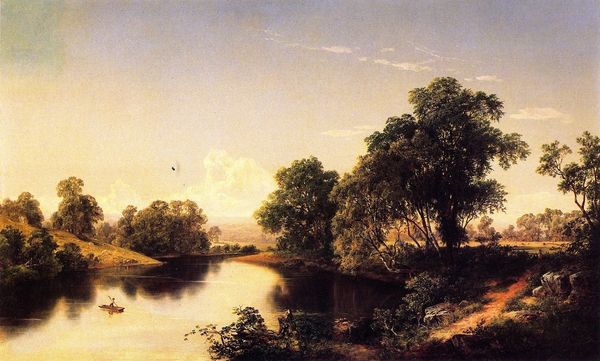
Copyright: Public domain
Editor: David Johnson’s "On the Waywayanda, Orange County, New York," painted in 1877. The detail is so precise. I’m struck by the material realism; you can almost feel the texture of the bark and the grass. What elements draw your attention? Curator: I’m intrigued by the pastoral ideal contrasted with the labor implied, even if unseen. Consider the source of Johnson’s pigments. Where were they mined, processed, and how did this contribute to both the creation and consumption of the landscape he depicts? The work romanticizes nature, but that experience was intrinsically connected to human production and consumption. Editor: So, you're thinking about the industry of art itself, rather than just the industry in the painting. Curator: Exactly. Oil paints themselves are products of industrial processes, inextricably linked to a complex web of labor and resources. How does knowing this shape your viewing? Editor: It makes me think about the access Johnson, as the artist, had to those materials. And how that contrasts with the lives of the laborers who gathered them, whose perspectives are entirely absent from the idyllic scene. Curator: The artist's labor too, then, becomes something to consider. The ‘en plein air’ notation speaks to immediacy and directness, yet that term masks hours of material labor, preparatory sketches, transporting equipment... it’s far from effortless, isn't it? Editor: It definitely shifts my perspective. It's not just a pretty scene; it’s a product of intertwined human and natural resources. Thanks, I am much more conscious of that. Curator: It’s about understanding the complete ecosystem of the artwork, acknowledging its relationship to labor, industry and consumption, I am also challenged in return.
Comments
No comments
Be the first to comment and join the conversation on the ultimate creative platform.

